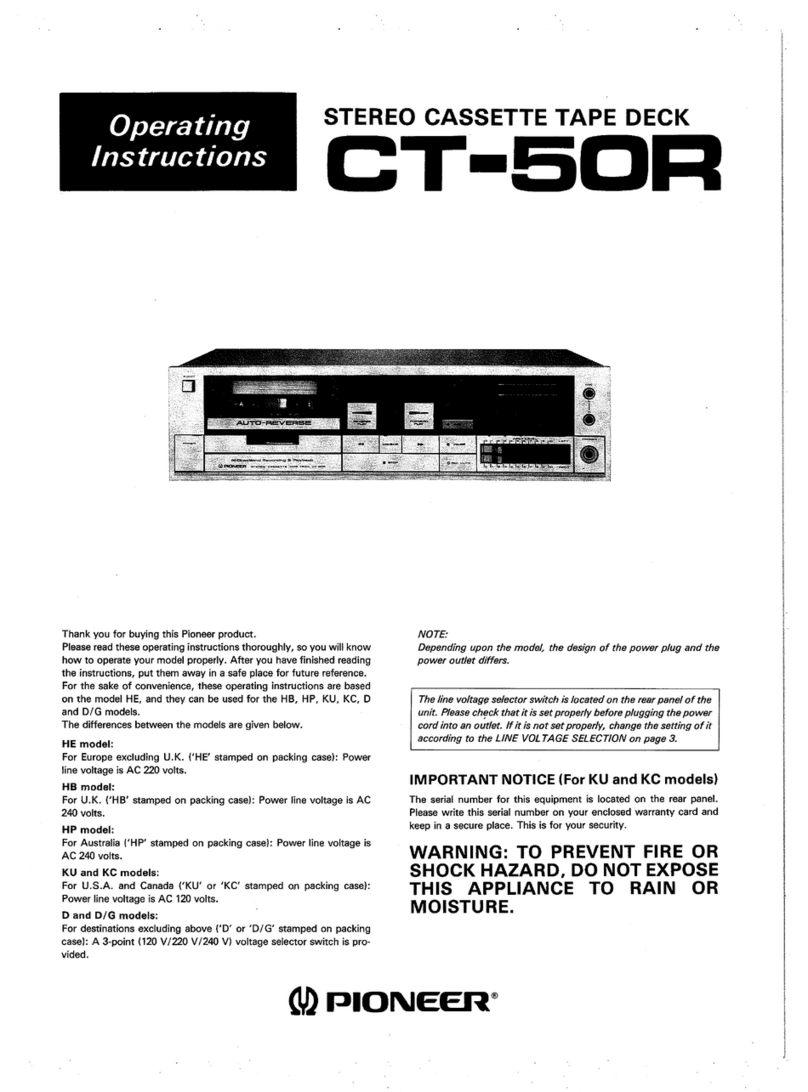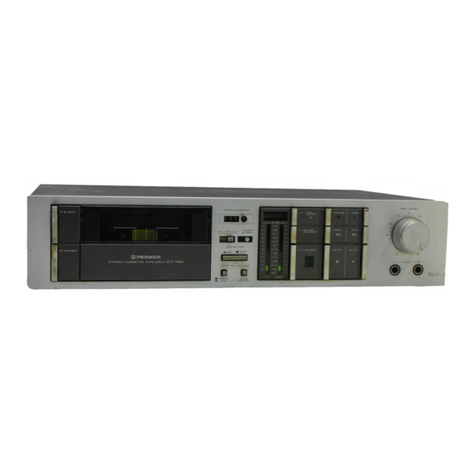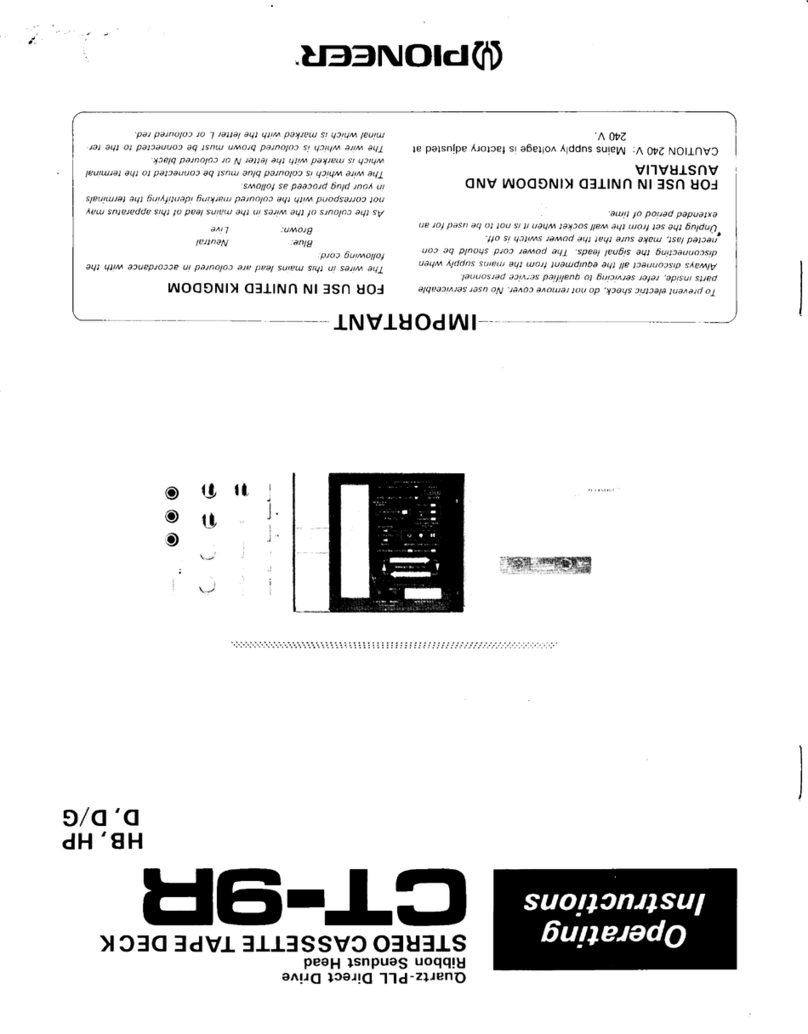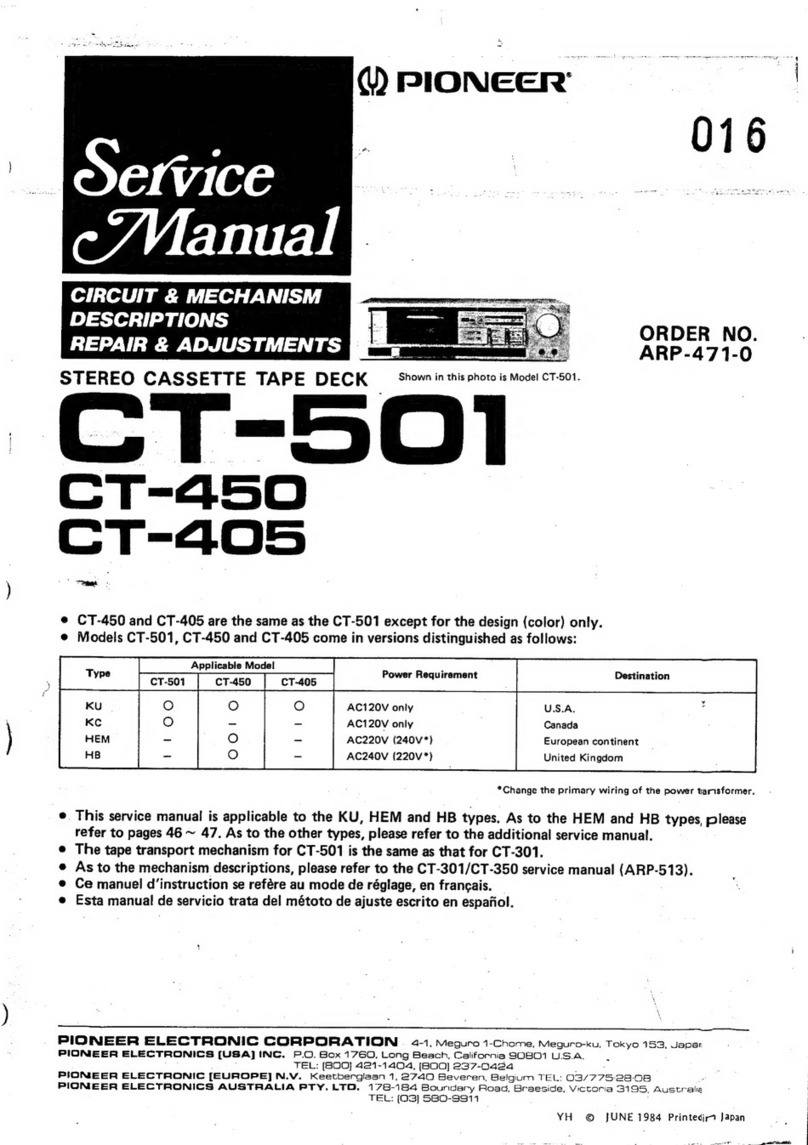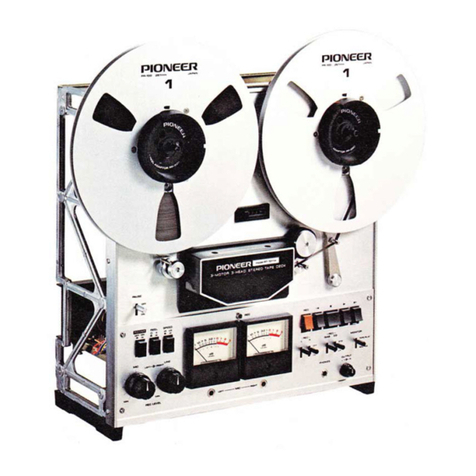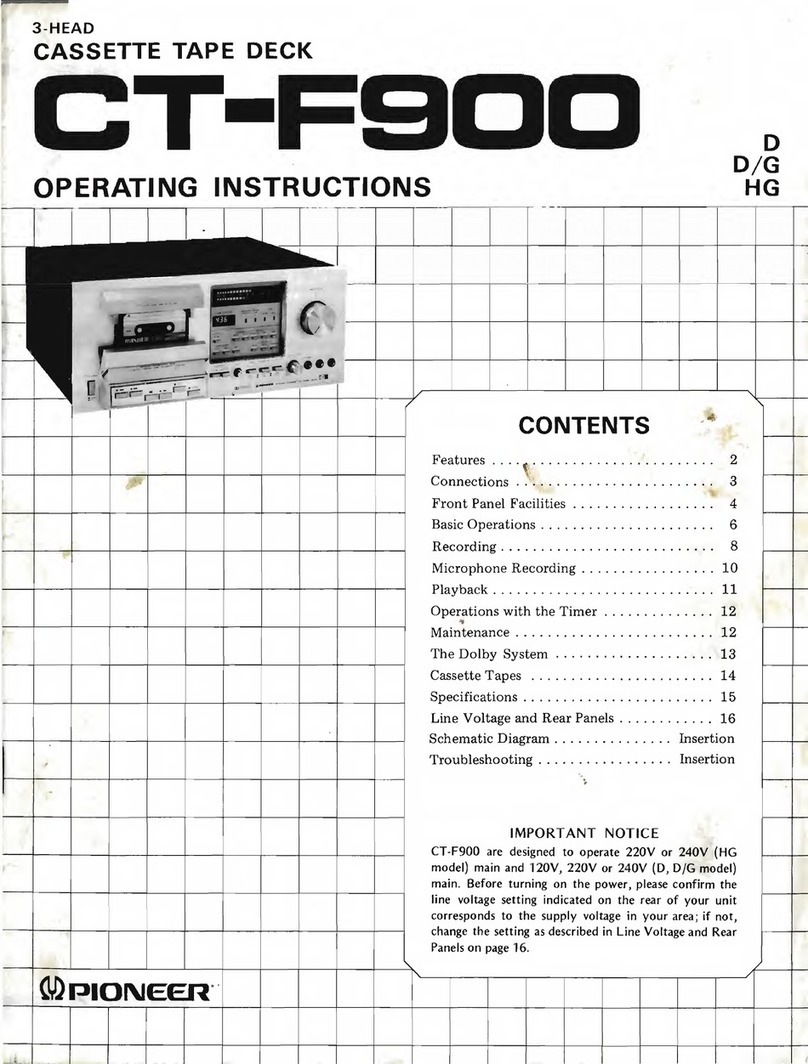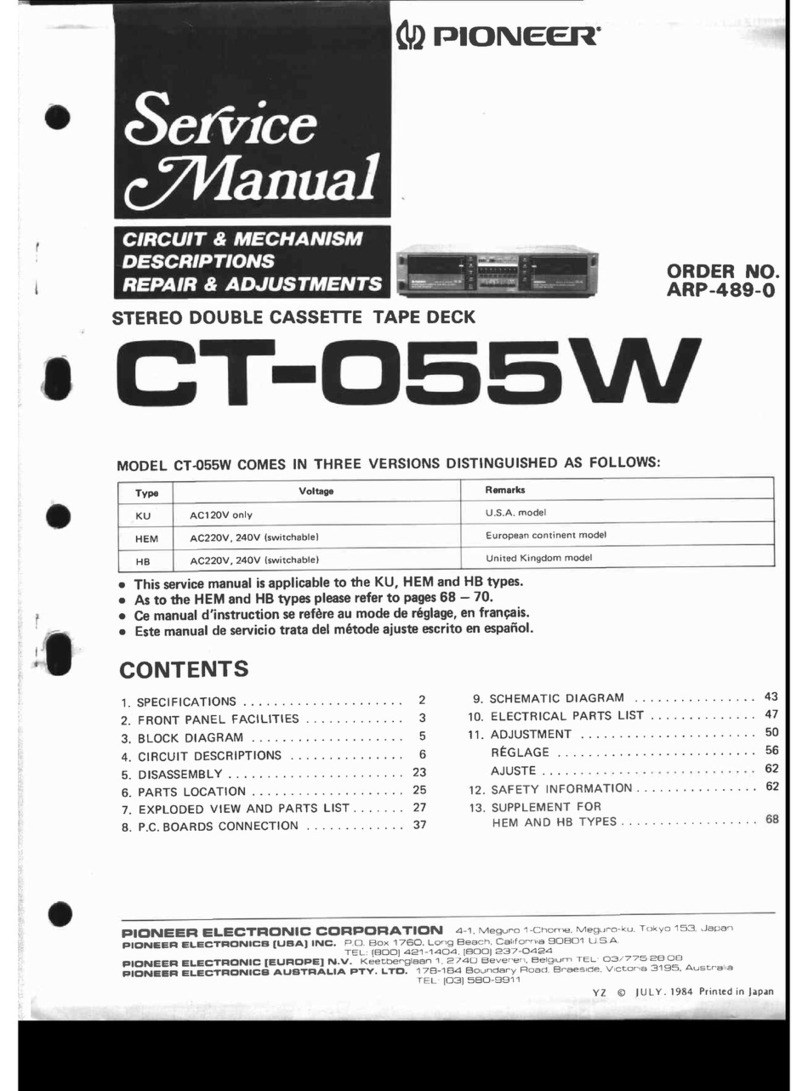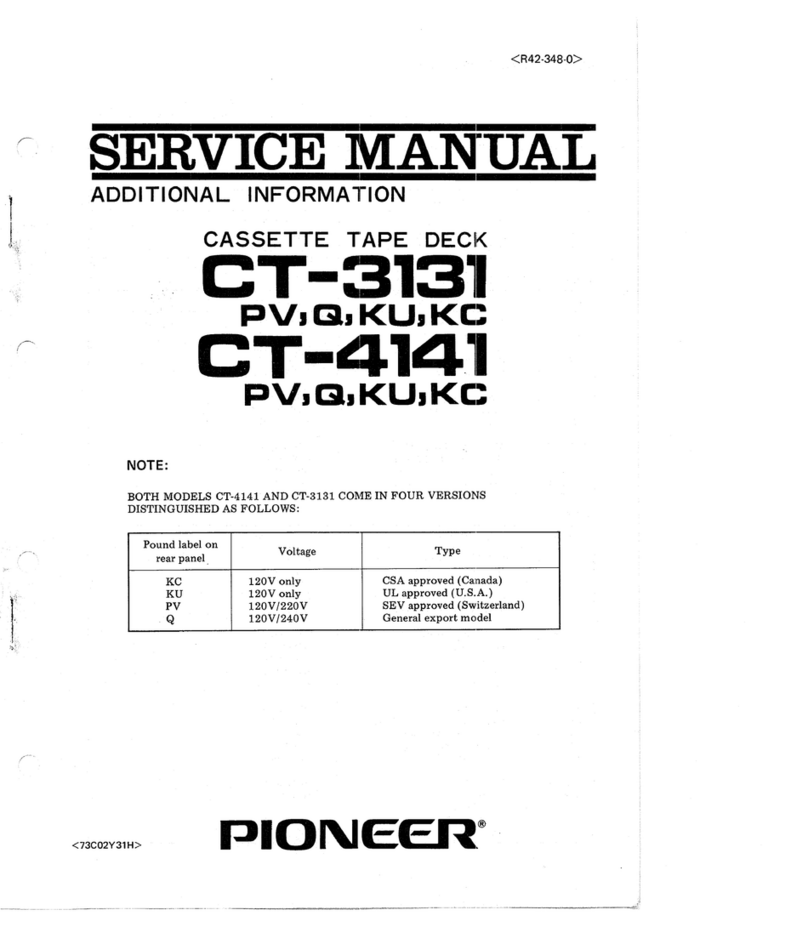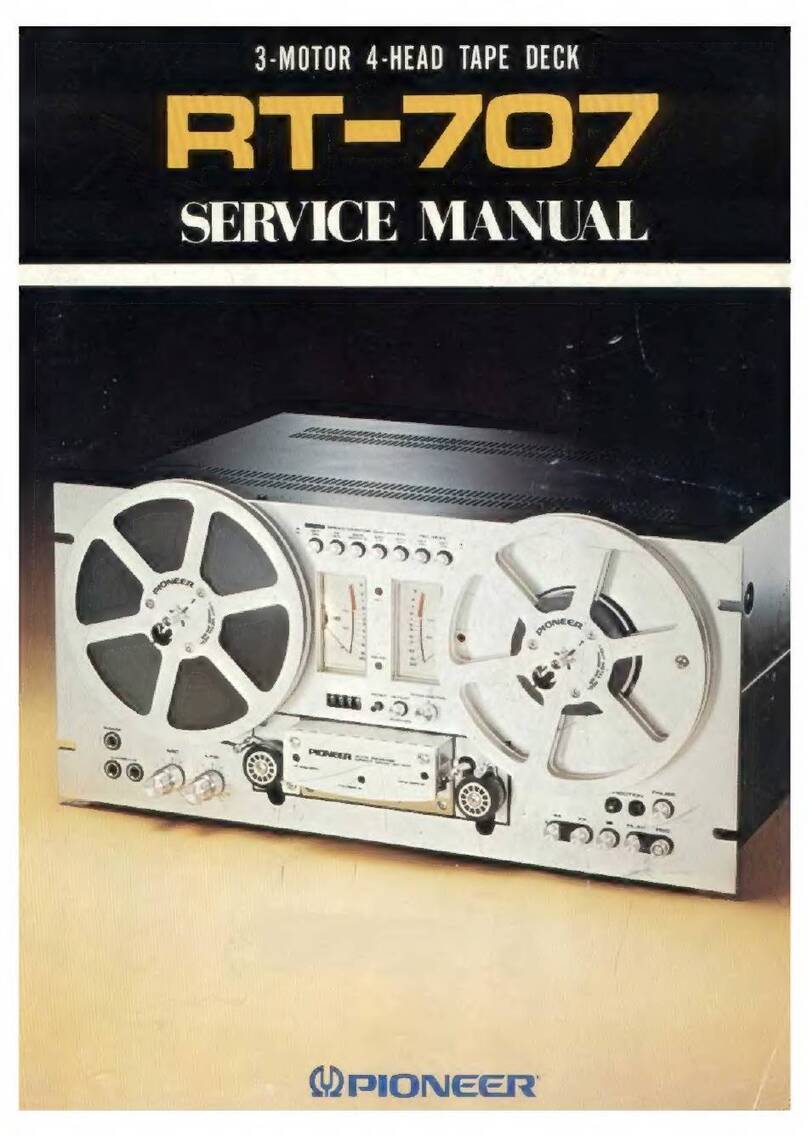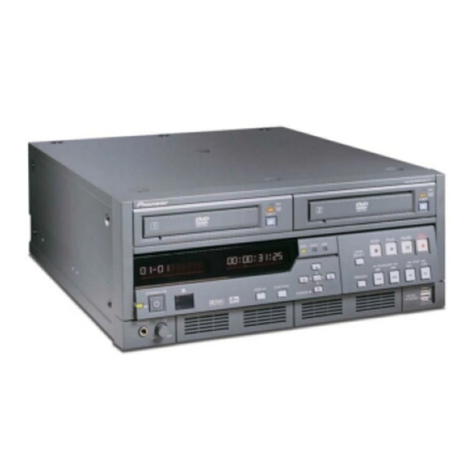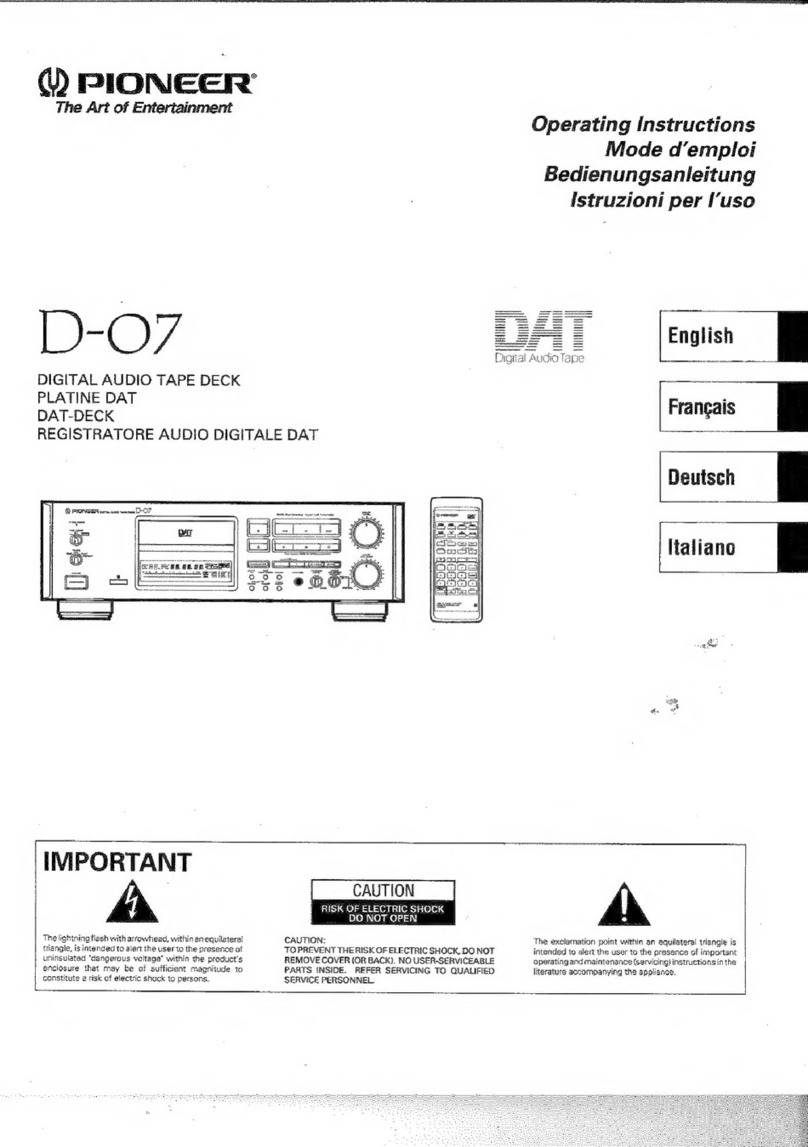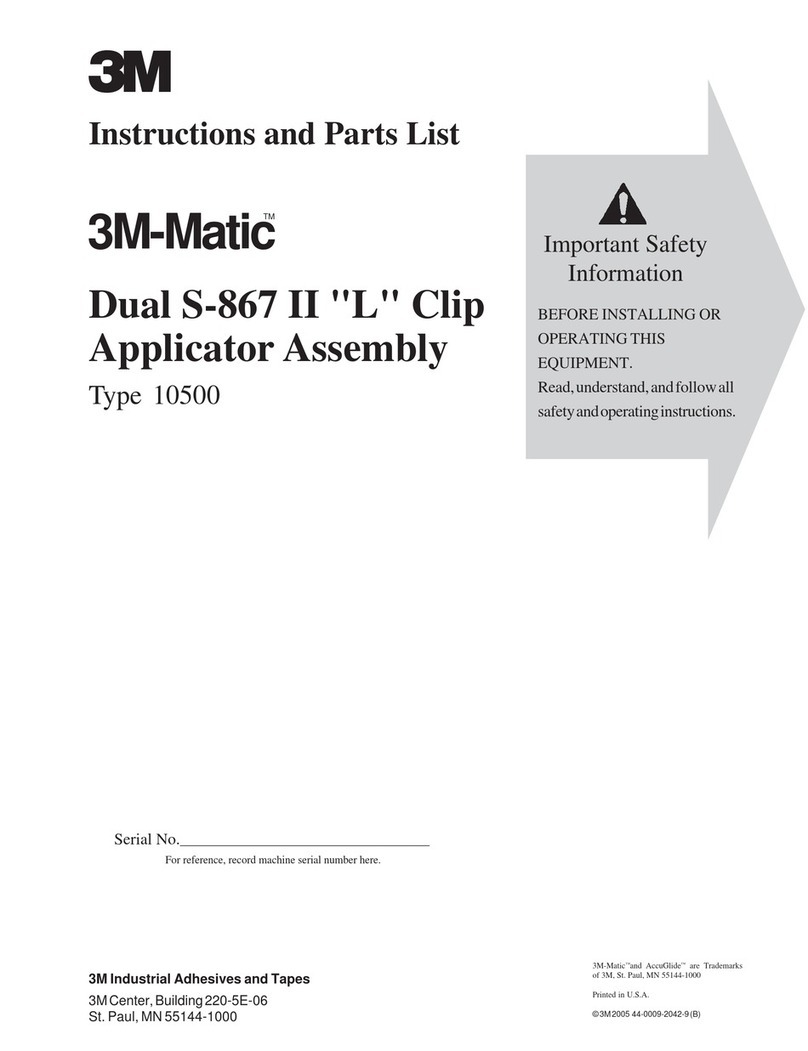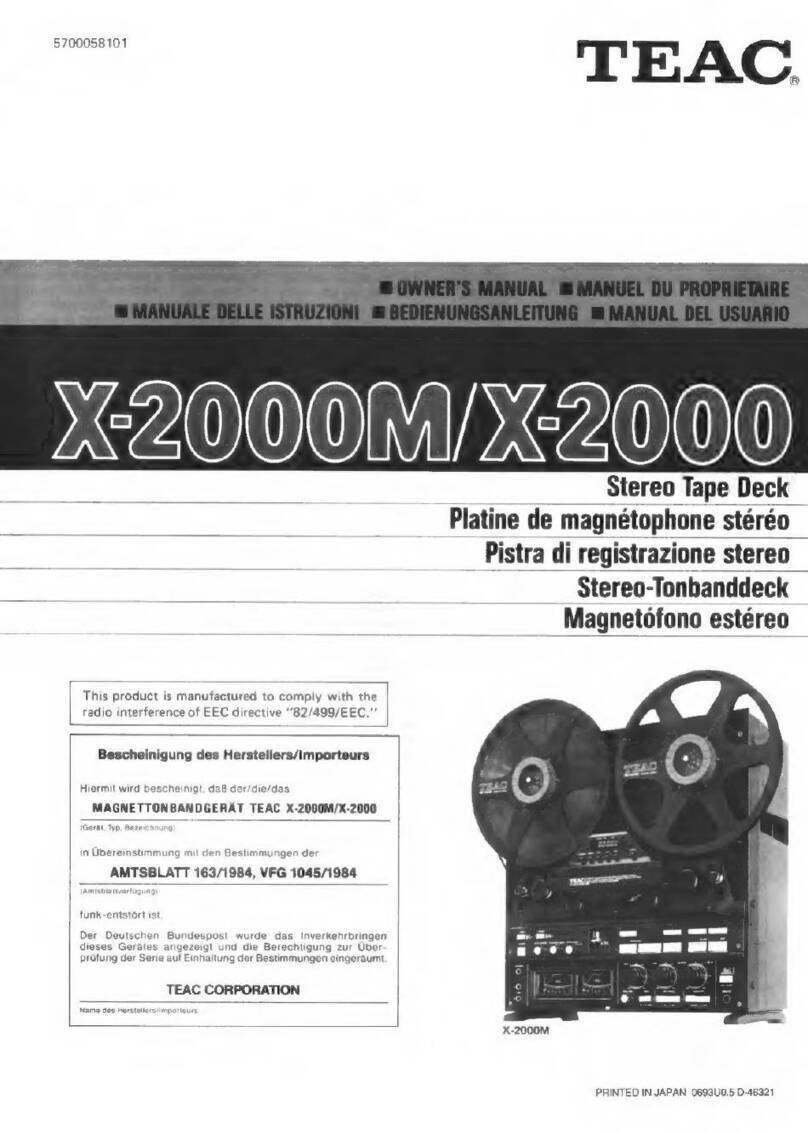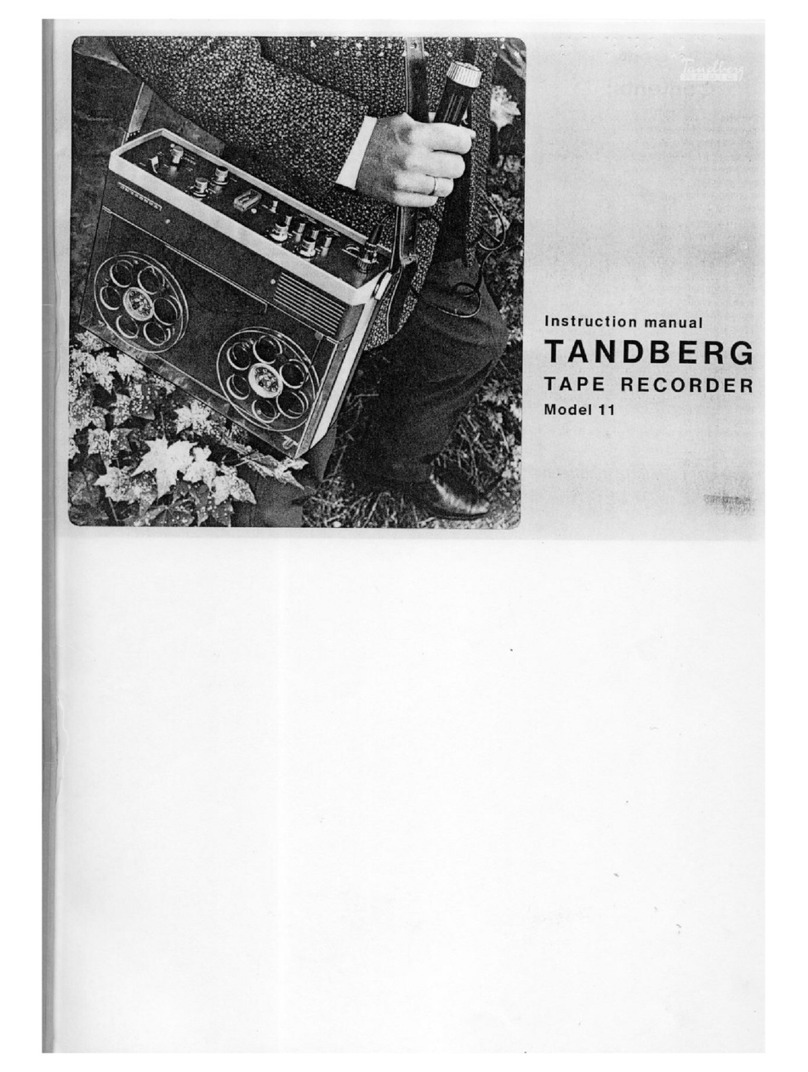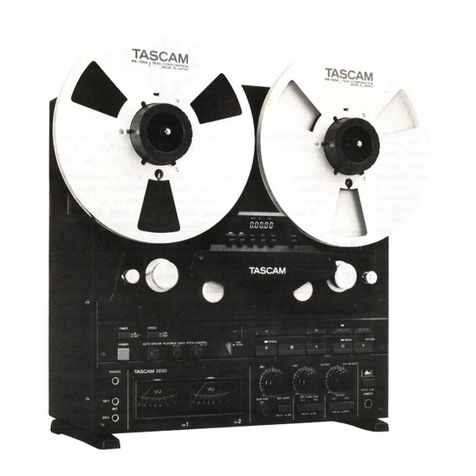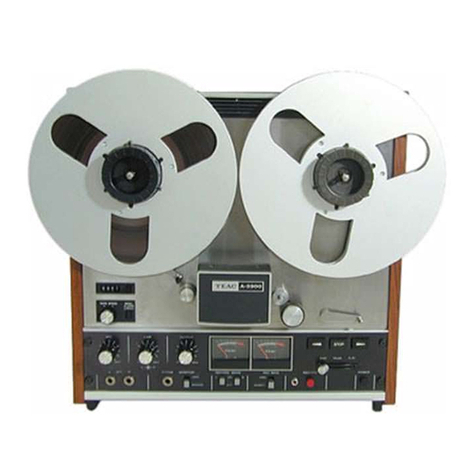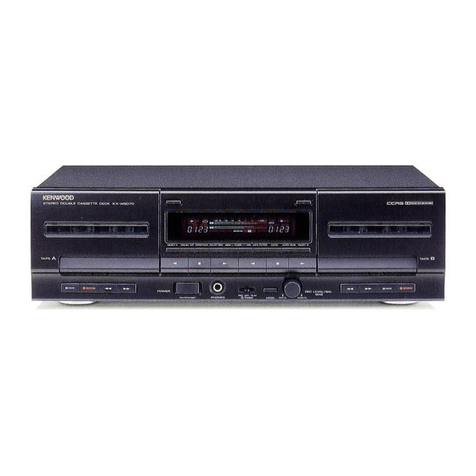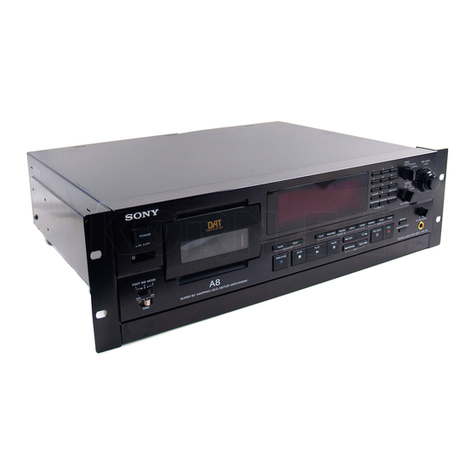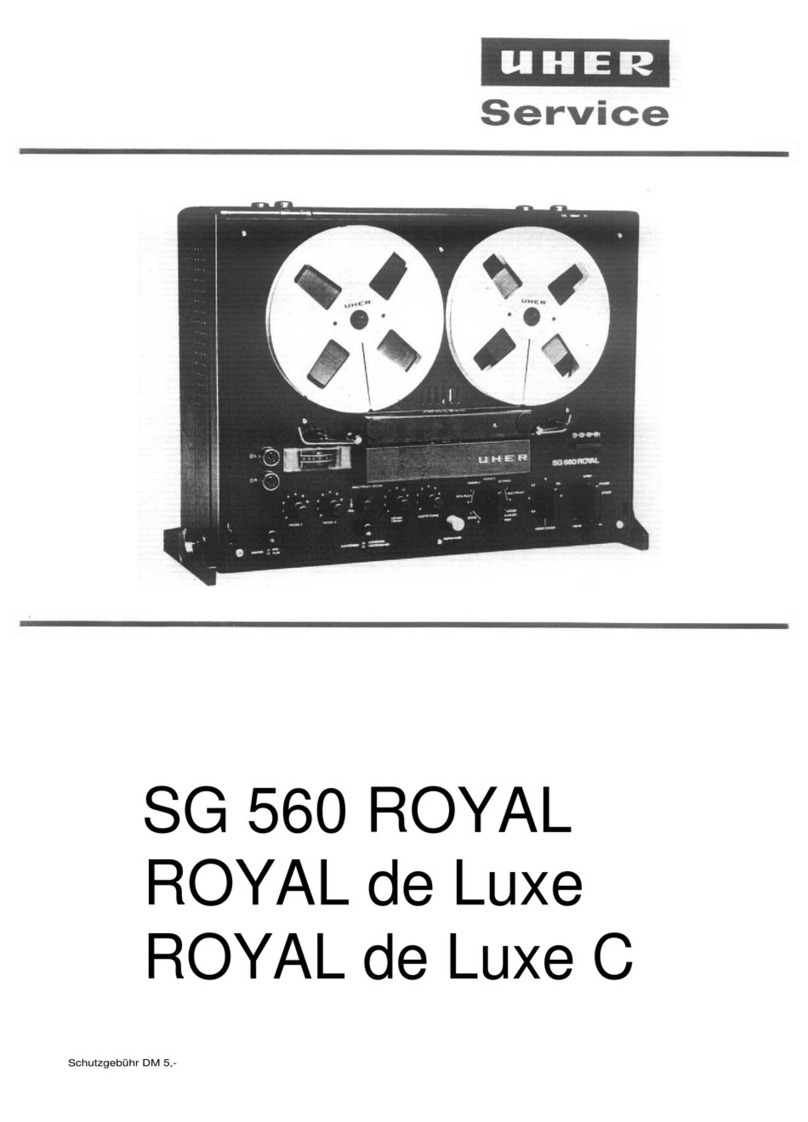
1.
SPECIFICATIONS
SYSTEMS?
wesiieuss
cad
sas
dhbencs
ocd
abacnenesedastens
4
track,
2-channel
stereo
Heads
...............ce
ee
“Hard
Permalloy’’
recording/playback
head
x
14
“Hard
Permalloy”’
playback
head
x
1
“‘Double-gap
Ferrite’
erasing
head
x
1
MOtOf
2sciceesatinsebiaessesies
dives
he
ceeecuSivaraiebenewsces
DC
servo
motor
x
2
Wow
and
Flutter
..............cceceeeeeeees
No
more
than
0.07%
(WRMS)
No
more
than
+
0.17%
(DIN)
Fast
winding
Time
..............cccceceeeeeeees
Approximately
110
seconds
(C-60
tape)
Frequency
Response
—20
dB
recording:
Normal
tape
...........ccscscaceseveeecececeeeeceeuecesens
25
to
14,500
Hz
Chrome
tape
...........ccceceesececeeeeeeueneerseceeeaeens
25
to
15,000
Hz
Metal
tape
............ccececcecscseceeseceecesseaeeeeeeees
25
to
16,000
Hz
0
dB
recording:
Normal
tape
.............ccecececeeececececesseeeeesesaeeees
25
to
11,000
Hz
Chrome
tape
............ccececseceeseeeseverseeeeeeeeausaes
25
to
11,500
Hz
Metal
tape
ciccsvicccccivataracbendiescssrvcovecweverssesters
25
to
15,000
Hz
Signal-to-Noise
Ratio
Dolby
NR
OFF
..........cccececceceeeceeeeesseeeeeeeeeees
More
than
58
dB
Noise
Reduction
Effect
Dolby
NR
B
type
ON
..........cecseeeeeeeee
More
than
10
dB
(at
5
kHz)
Dolby
NR
C
type
ON
....
More
than
19
dB
(at
5
kHz)
Harmonic
Distortion
...........c.ccceseeeeeeeees
No
more
than
0.8%
(0
dB)
Input
(Sensitivity)
LINE
(INPUT)
........cccccceeeceeeeees
60
mV
(Input
impedance
80
kQ)
Output
(Reference
level)
LINE
(OUTPUT)
.............00.
316
mV
(Output
impedance
4.8
kQ)
Subfunctions
¢
Relay
playback
(Deck
|
*
Deck
II)
¢
Synchronized
copy
start
¢
High-speed
and
normal-speed
tape
copying
(Deck
|
>
Deck
II)
Dolby
NR
B/C
types
Auto
tape
selector
(Deck
|)
6
segment
LED
level
meter
Cue
and
Review
(Deck
|)
Full
automatic
stop
function
Timer
stand-by
function
(Unattended
recording:
Decklil)
(Wake-up
playback:
Deck
|
and
Deck
I!)
¢
One-Touch
recording
INFORMATION
TO
USER
[FOR
U.S.A.
MODEL]
This
equipment
generates
and
uses
radio
frequency
energy
and
if
not
installed
and
used
properly,
that
is,
in
strict
accordance
with
the
manufacturer's
instructions,
may
Cause
interference
to
radio
and
television
recep-
tion.
It
has
been
type
tested
and
found
to
comply
with
following
measures:
the
limits
for
a
Class
B
computing
device
in
accordance
°
Rules,
which
are
designed
to
provide
reasonable
protec-
receiver
witl
not
occur
ina
particular
installation.
cuits.
If
this
equipment
does
cause
interference
to
radio
or
television
reception,
which
can
be
determined
by
turn-
ing
the
equipment
off
and
on,
the
user
is
encouraged
to
try
to
correct
the
interference
by
one
or
more
of
the
helpful:
;
reorient
the
receiving
antenna
with
the
specifications
in
Subpart
J
of
Part
15
of
FCC
*
relocate
this
component
with
respect
to
the
tion
against
such
interference
in
a
residential
installa-
*
move
this
component
away
from
the
receiver
tion.
However,
there
is
no
guarantee
that
interference
*
plug
this
component
into
a
different
outlet
so
that
component
and
receiver
are
on
different
branch
cir-
CT-IOGOW,
CT-S77W
Miscellaneous
Power
Requirements
KU,
KC
models
.........cc.ecceccesceccccevesseccecesenscens
AC
120
V,
60
Hz
HEM
model
...........cccccccscecucceccauccusescaesenrs
AC
220
V,
50/60
Hz
HB,
HP
models
..............scccssesesesecsecceeseeecs
AC
240
V,
50/60
Hz
D,
D/G
models
...............00cccceee
AC
120
V/220
V/240
V,
50/60
Hz
(switchable)
Power
Consumption
KU
KO
model!
.csiccdScitsadeuaseesianeecesdeniideedocsnncesceceeialan
ge
19W
HEM,
HB,
HP
models
...............csessccccsseccceacceccesauseusceee
26
W
D,'D/G
Models
vii5s
siidaccessccesdeseentsteds
Svacceicecsievcsivcenseies
19
W
Dimensions
............:ecceccsecessuseeeee
420
(W)
x
113
(H)
x
263
(D)
mm
16-9/
16
(W)
x
4-7/16
(H)
x
10-6/16
(D)
in
Weight
(without
package)
.............:cccsseeseeeeesenee
4.8
kg
(10
lb
9
oz)
Accessories
Operating
instructions
..............ccccccseccssssceceecesscusessiseaeeacesecees
1
Connection
cord
with
pin
plugs
..............ccccccsececesecuuseiae
sesesseeees
2
NOTE:
Specifications
and
design
subject
to
possible
modifications
without
notice
due
to
improvements.
If
necessary,
the
user
should
consult
the
deale
cor
an
ex-
perienced
radio/television
technician
for
addiig
mal
sug-
gestions.
The
user
may
find
the
followin,
booklet
prepared
by
the
Federal
Communications
Cy
mission
“How
to
tdentify
and
Resolve
Radio-TV
Ingsference
Problems’.
This
booklet
is
available
from
the
US
Governnert
Print-
ing
Office,
Washington,
D.C.,
20402,
Sp«k
No.
004-000-00345-4.
The
above
instructions
apply
only
to
units
yFaich
will
be
operated
in
the
United
States.
